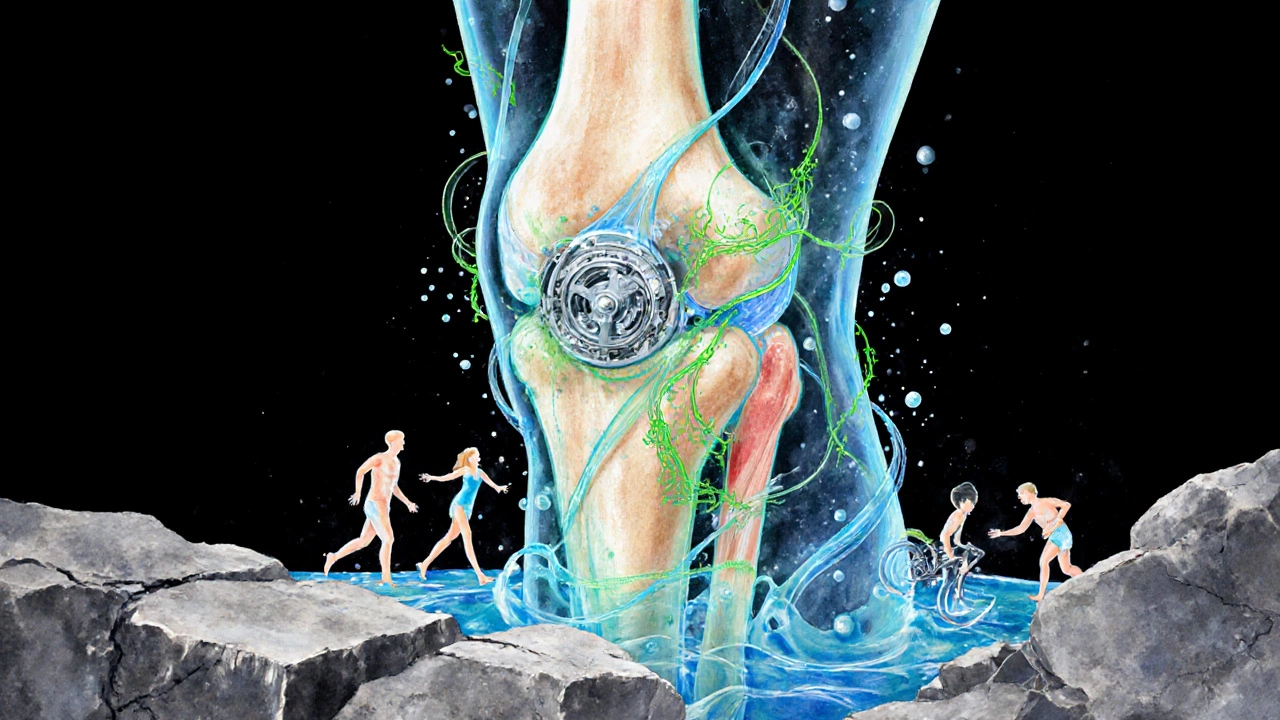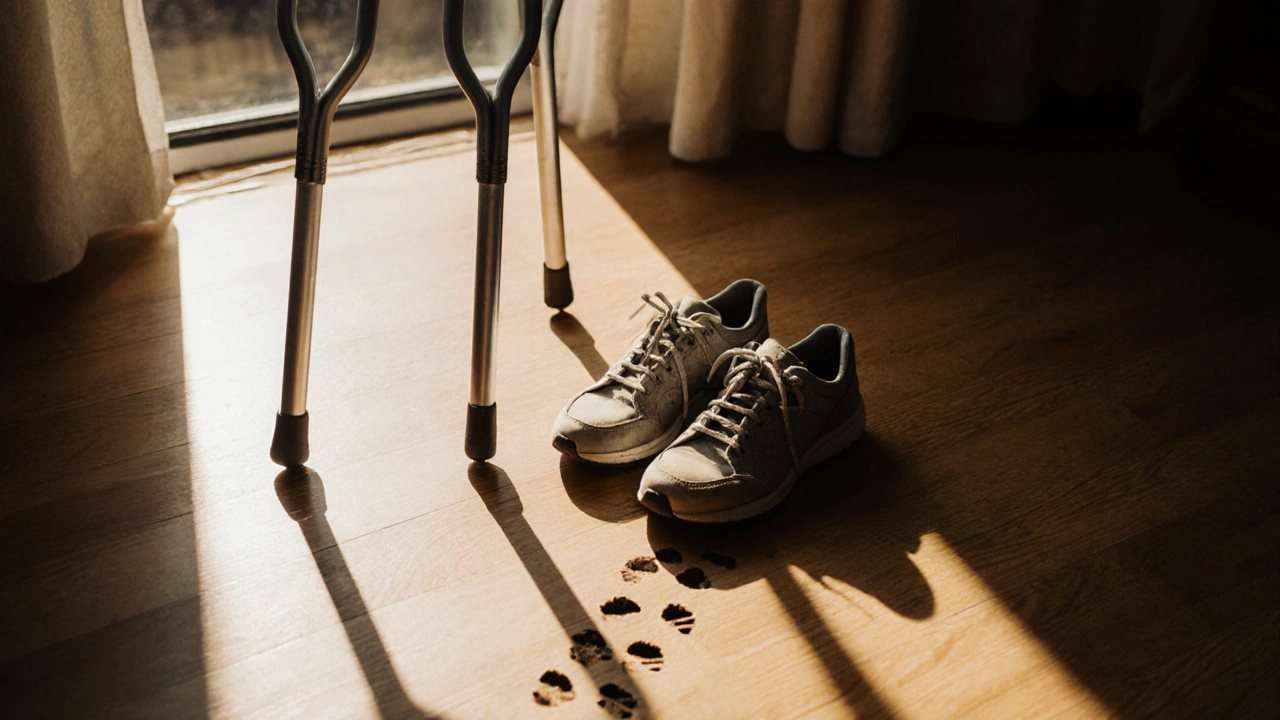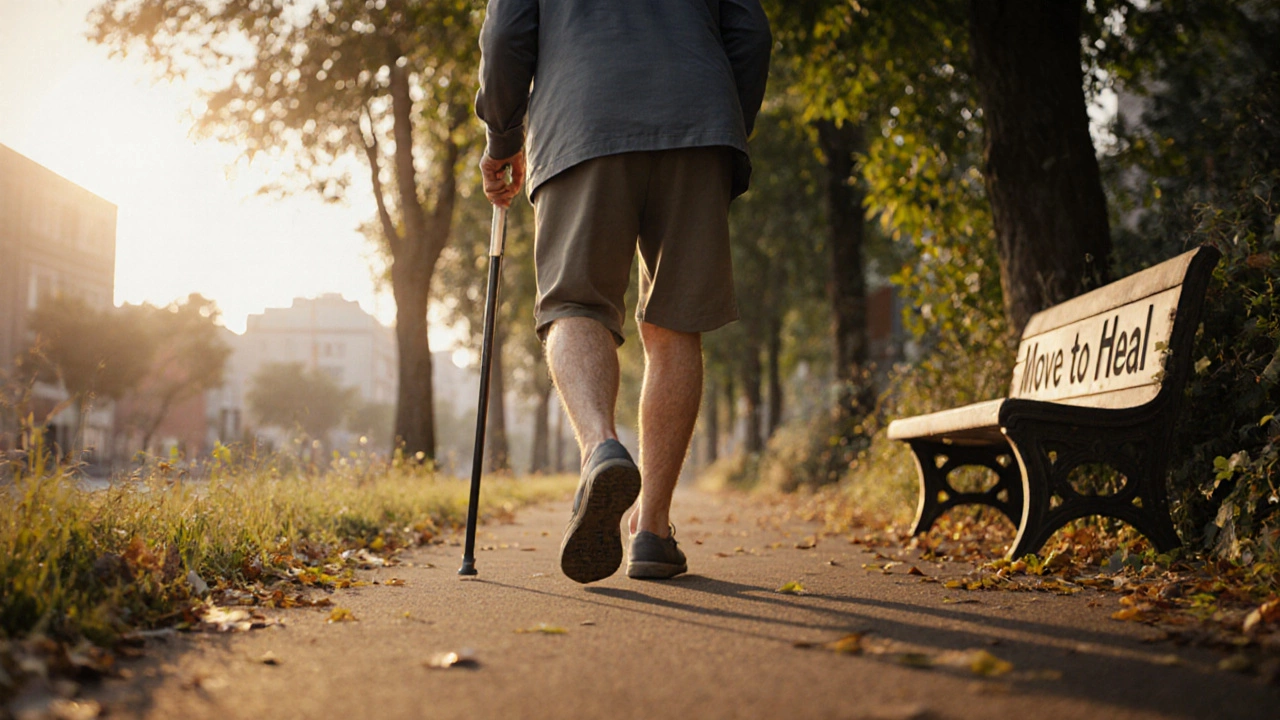Knee Movement Calculator
Calculate your current knee activity level and get personalized recommendations to prevent worsening knee pain.
If you’ve been told you need a knee replacement, you’re not alone. Millions of people worldwide live with knee arthritis that makes walking, climbing stairs, or even standing up from a chair painful. But here’s the truth most doctors don’t tell you: knee replacement isn’t the fix-it’s the last resort. And the biggest mistake people make after being told they need one? They stop moving.
Why Staying Still Makes Your Knees Worse
When your knee hurts, the natural reaction is to rest. You avoid walking, skip exercise, and sit more. It feels like protection. But in reality, you’re starving your joint. Your knee isn’t just bone and cartilage. It’s surrounded by muscles, ligaments, and fluid that keep it stable and lubricated. When you stop using it, those muscles shrink. The fluid stops circulating. Cartilage, which has no blood supply, relies on movement to get nutrients. No movement? No nutrition. And that’s when the damage accelerates. A 2023 study from the Journal of Orthopaedic Research followed 427 people with moderate to severe knee osteoarthritis. Those who reduced their daily steps by more than 30% over six months saw a 47% faster decline in cartilage thickness compared to those who stayed active-even if they still had pain. Pain doesn’t mean damage is getting worse. But inactivity does.The Myth of "Protect Your Knee"
You’ve heard it a hundred times: "Don’t strain your knee." "Avoid stairs." "No running." But that advice, while well-meaning, is outdated. The goal isn’t to avoid stress-it’s to manage it. Think of your knee like a car tire. If you never drive it, the rubber hardens and cracks. If you drive it on rough roads without maintenance, it wears out fast. But if you drive it regularly on smooth roads, with proper alignment and pressure, it lasts years longer. The same goes for your knee. Low-impact movement-like walking, swimming, or cycling-keeps the joint lubricated, strengthens the muscles around it, and reduces pressure on the damaged cartilage. In fact, people who walk 6,000-10,000 steps a day before knee replacement surgery recover 30% faster and report better outcomes six months after surgery.What Happens When You Wait Too Long
Waiting to get surgery isn’t always wise-but so is waiting because you’re afraid of surgery. The real problem is letting inactivity turn a manageable condition into a broken joint. When you avoid movement for months or years, your quadriceps weaken. Your hip and ankle joints compensate. Your posture changes. Your spine curves. Suddenly, it’s not just your knee hurting-it’s your back, your other knee, even your feet. In Bangalore, I’ve seen patients come in who’ve been told they need a knee replacement for five years. They’ve tried creams, braces, injections, and yoga. But they never changed how they moved. By the time they finally agreed to surgery, their muscles were so weak they needed six weeks of physical therapy just to stand straight. Their recovery was longer. Their pain lasted longer. Their quality of life suffered more.
The Right Way to Move With Bad Knees
You don’t need to run a marathon. You don’t need to lift heavy weights. You need consistent, controlled movement. Here’s what works:- Walking-30 minutes a day, even if you need a cane or walker. Start with 10 minutes if that’s all you can do. Build up slowly.
- Seated leg extensions-Sit in a chair, straighten one leg, hold for 5 seconds, lower slowly. Do 10 reps per leg, twice a day. This strengthens your quads without stressing the joint.
- Water walking-If you have a pool nearby, walk back and forth in chest-deep water. The buoyancy takes pressure off your knees while still working your muscles.
- Stationary cycling-Low resistance, high cadence. Pedal for 15-20 minutes. It’s gentle, effective, and improves circulation.
- Standing on one foot-Hold onto a counter, lift one foot off the ground, hold for 15 seconds. Switch sides. Do this 3 times a day. It improves balance and prevents falls.
What to Avoid
Some activities don’t just fail to help-they make things worse:- Deep squats-If your knees go past your toes, you’re putting 7x your body weight on them. Skip them.
- Running on hard surfaces-Concrete and asphalt increase impact. If you love running, switch to a treadmill or track.
- Stair climbers-These machines force your knee into a high-flexion position that grinds the cartilage.
- Long periods of sitting-Get up every 30 minutes. Even a 1-minute walk helps.
- Ignoring pain signals-Sharp, stabbing pain means stop. Dull, achy discomfort? That’s usually okay. Learn the difference.

When Surgery Is the Right Choice
Knee replacement isn’t a failure. It’s a tool. And it works best when you’re ready for it-not because you’ve given up, but because you’ve done everything else. You’re a good candidate if:- Your pain keeps you awake at night
- You can’t walk more than 10 minutes without stopping
- Over-the-counter painkillers don’t help anymore
- You’ve tried physical therapy for 3+ months with no progress
- Your X-ray shows bone-on-bone arthritis
It’s Not About the Knee-It’s About Your Life
Your knee pain isn’t just a medical issue. It’s a life issue. It keeps you from playing with your grandkids. From going to the temple. From taking a morning walk with your spouse. From feeling like yourself. The #1 mistake isn’t getting surgery too late. It’s letting fear stop you from moving before you need it. Movement isn’t the enemy. Stillness is. You don’t have to be pain-free to start. You just have to start.Is walking good for bad knees?
Yes, walking is one of the best things you can do for bad knees. It improves circulation, strengthens muscles around the joint, and helps maintain cartilage health. Aim for 30 minutes a day, even if you need a cane or walker. Start slow and build up. Walking doesn’t wear out your knee-it keeps it alive.
Can I avoid knee replacement with exercise?
Many people can delay or even avoid knee replacement by staying active and strengthening the muscles around the knee. Studies show that consistent low-impact exercise can reduce pain and improve function for years. But if you have bone-on-bone arthritis and pain that disrupts sleep or daily life, exercise alone won’t rebuild cartilage. At that point, surgery becomes the most reliable option for long-term relief.
What’s the fastest way to heal a bad knee?
There’s no instant fix. But the fastest path to healing combines movement, weight management, and sleep. Losing just 5-10 pounds reduces pressure on your knees by 20-40 pounds with every step. Combine that with daily walking and leg-strengthening exercises, and you’ll see improvement in 4-8 weeks. Healing isn’t about speed-it’s about consistency.
Does knee replacement fix everything?
Knee replacement replaces damaged bone and cartilage, but it doesn’t fix weak muscles or poor movement habits. People who don’t do physical therapy after surgery often still struggle with stiffness and balance. The best results come from those who keep moving-before and after surgery. Think of it as a reset button, not a magic cure.
How do I know if my knee pain is arthritis?
Arthritis pain is usually deep, aching, and worse in the morning or after rest. It gets better with movement but flares up after long periods of activity. You may hear grinding or clicking. Swelling and stiffness lasting more than 30 minutes after waking are common signs. An X-ray confirms bone spurs and narrowing of the joint space. If you’re over 50 and have these symptoms, it’s likely osteoarthritis.
